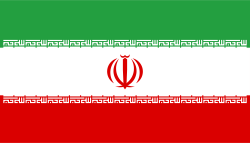Pro-Israel Hackers Target Iran's Crypto Exchange, Stealing $90 Million
 Iran
IranIran's recent release of Italian journalist Cecilia Sala on January 8, following her arrest in December, underscores the country's ongoing strategy of hostage diplomacy as a foreign policy tool, particularly during a crucial year for nuclear negotiations. According to political scientist David Rigoulet-Roze of the French Institute for International and Strategic Affairs, Iran uses such arrests to negotiate for the release of its nationals or for financial concessions. Sala's release coincided with Iran's diplomatic overtures to re-engage with Western nations regarding the Joint Comprehensive Plan of Action (JCPOA) slated to expire on October 18. Former Iranian political prisoner Taghi Rahmani noted that Iran perceives an opportunity to apply pressure on Europe in light of a new U.S. administration. Amid rising tensions, the cases of Western hostages, including French nationals, highlight concerns over Iran's tactics. French Foreign Minister Jean-Noël Barrot has characterized the conditions of some European detainees in Iran as akin to "torture," while emphasizing that the release of hostages must precede any negotiations.
 Iran
Iran Iran
Iran Iran
Iran